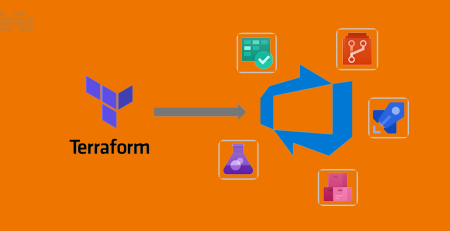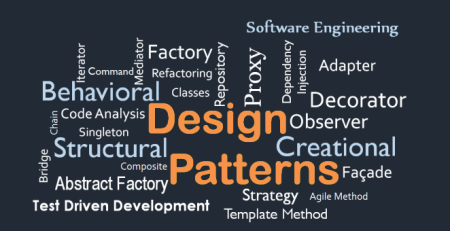Microservices Best Practices
In the world of software development, there are always new trends and best practices to learn about and adopt. When it comes to microservices, there are a few key best practices to keep in mind in order to create successful, scalable microservices.
One best practice is to keep your microservices small and focused. A microservice should have a single, well-defined purpose. This makes it easier to develop, test, and deploy, as well as easier to understand and maintain.
Another best practice is to make sure your microservices are loosely coupled. This means that each microservice should be independent and not rely on other microservices. This makes your microservices more scalable and resilient, as well as easier to change and deploy.
Finally, it’s important to design your microservices with security in mind. Since microservices are distributed and often communicate with each other, it’s important to make sure each microservice is secure.
When you look into the traditional methods of designing applications, you’ll notice that they were created as monoliths, packaged as a collection of code, and installed as a single entity. Managing tens of thousands of lines of code became time-consuming. It made it difficult for large corporations to implement architectural improvements.
Digital unicorns are rapidly created and operated in modern times. This process can now move at a breakneck pace thanks to the digital revolution. Microservices architecture enables a quantum leap in this industry: a flexible, scalable, and long-lasting corporate architecture.
In this article, we will go over some microservices tips and best practices that will help you achieve excellent results with little effort.
What Is Microservices Architecture?
Microservice architecture is an approach to application design that deconstructs monolithic programs into modular, distributed, scalable, and deployable services with loose coupling. Microservices are made up of a number of lightweight services that communicate with one another via APIs.
The services are managed centrally, despite the fact that they are written in a variety of programming languages, technological stacks, and databases. Because the program is self-contained, you can update and add new functionality or features without affecting the overall application.
Advantages of a Microservice Architecture Over Monolithic Architecture
Autonomy
You can select the programming language, data store, framework, technology stack, and optional libraries when using microservices. This enables you to form multidisciplinary teams that can work independently on separate microservices and components.
Monoliths limit the choice of framework, programming language, technological stack, and database. Once you’ve decided on these, it’s impossible to change your architecture without compromising certain functionality or services.
Independent Scalable Structure
The microservices architecture allows for rapid scaling up and down. Traditional monoliths share a database and a programming language. Each microservice, on the other hand, can have its own database and programming language.
It can be difficult to change languages or stacks of monolithic architectures. Microservices make it easy to change the architecture without affecting the entire system. By partitioning your system across multiple servers and allowing its services to grow in response to demand, you reduce the likelihood that a single server failure will bring the entire system down.
Faster Upgrades
When working in monoliths, it may take longer for updates to take effect due to the pervasiveness of the entire system. Every modification necessitates the compilation and execution of the entire application.
Modifying one microservice has no effect on the others in a microservice architecture. This means quicker application upgrades and enhancements.
Rapid and Continuous Deployment
Because each microservice is self-contained, applications can be developed and deployed quickly. Furthermore, you can have separate teams working on each microservice, allowing them to use different technology stacks and programming languages.
It takes longer to deploy a monolithic architecture. Nonetheless, you must ensure that engineers with expertise in your tech stack are hired or trained before they begin working on it. This can lead to lower productivity.
Inherently Secure
A monolithic design is distinguished by a single, large, integrated system. Any problem can cause the application to be interrupted. Because of the architecture’s complexity, any code changes must be thoroughly tested before being deployed to production.
Microservices, on the other hand, are made up of separate components. A single service outage does not automatically foreshadow the failure of all others. If one microservice, such as publishing, fails, the others will continue to function independently. This results in a smaller blast radius when compared to monoliths.
Benefits of Microservices
- Faster deployment and scaling: A smaller application domain enables automation, resulting in quicker deployments and scaling.
- Minimize downtime: Limit the effect of a single unavailable service on your core business function, hence enhancing the overall business uptime.
- Ensure availability: Maintain functional separation across microservices to reduce the impact of an instance failure.
Security Challenges To Consider
- Multi-cloud deployments: Since microservices are distributed across several data centers, host machines, and cloud providers, you constantly risk losing visibility and control over the components.
- Data management: In a microservice architecture, data is highly dynamic. Thus, they can interact, migrate, and change across multiple components and databases. How can data security be ensured when there is a large degree of dynamism? There’s more. Due to the numerous entry points and communication routes, you are susceptible to data leaks.
- The rapidly evolving security landscape: The modern SDLC necessitates the gradual expansion of an application’s code and data. The iterative and incremental development methodology exerts ongoing pressure on microservices. Each new feature or iteration increases the likelihood that security holes in the application may be exploited.
Best Microservices Tips
With this summary of the advantages and disadvantages of a microservices architecture in mind, let’s look at some of the best microservices tips. These best practices will help you create a secure, scalable, manageable, and robust network of interconnected microservices.
Domain Driven Design
Each service’s scope must be distinct and well-defined. Remove anything irrelevant to the scope of your service and keep only the elements required to meet its goal.
When creating a microservice architecture, make sure to use a new domain-driven design. If you already have a microservice running, simply check to see if it uses a domain-driven architecture. You may not need to redo everything, but with a few minor changes, you can make it a better-isolated service with a distinct, well-defined scope.
Every domain-driven design model is divided into two stages: strategic and tactical. The strategic phase ensures that the design architecture fully addresses the organization’s needs. During the tactical stage, on the other hand, a domain model can be built using a variety of design patterns.
Better Response with Single Responsibility Principle
The Single Responsibility Principle (SRP) is a microservice design tenet that requires each module or class to excel at its assigned task. Each service or function has its own business logic that is designed to achieve specific goals.
One of the most important advantages of SRP is the reduction of reliance. Each service has little overhead because each function is designed to perform specific tasks. This technique, in addition to speeding up responses, eliminates the wait time while waiting for support services to finish running.
Orchestrate Microservices
Microservice orchestration is a critical success factor for your processes and tools. Technically, you could run containers on a virtual machine using tools such as systemd, Docker, or podman, but this lacks the scalability of a container orchestration platform. This reduces the benefits of using a microservices design in terms of availability and reliability. A reliable container orchestration platform is required for effective microservice orchestration.
Go to the DevSecOps Way
DevSecOps is a development technique that integrates security throughout the entire application development process, similar to safeguarding your application from the start. Rather than waiting until the program is ready for production, the development and security teams work together from the start.
You should also monitor your pipelines in production and through CI/CD on a regular basis. The same can be said about extensions and third-party libraries. This ensures that your application design is always secure, making it easier to identify and evaluate vulnerabilities and gaps.
Invest in Monitoring
The massive scaling of hundreds or thousands of small, modular services can be facilitated by a microservices-based architecture. Despite the vast promise of increased speed, availability, and reach, a comprehensive system of microservices necessitates a systematic and strategic approach to monitoring. Monitoring your microservices will ensure that they function as intended, are accessible to your customers, and use resources efficiently. You can take appropriate action if these conditions are not met.
There’s no need to reinvent the wheel when it comes to monitoring. A number of widely used monitoring systems can be seamlessly integrated into your infrastructure. Some solutions use SDKs to export metrics that can be added to a microservice with just one or two lines of code. Others may be used as a plugin with your API gateway or service to monitor networking issues and resource consumption.
Metrics collected by your monitoring tools can be displayed in visually appealing dashboards to help you better understand the data driving your microservices. How many people were online at 10:00 p.m. on Monday? Has the CPU load increased significantly since implementing that new feature? How long does it take for our product shipping API and invoicing API to respond?
By monitoring your microservices and clearly displaying your hard figures, you can make informed decisions about how to keep your microservices healthy and available. You will maintain user satisfaction by doing so.
Summary
Microservices can take you on an exciting journey! You begin with the benefits of accelerated deployment and scalability, reduced downtime, and overall improved availability for your business. Then you add your orchestration platform and best practices, and presto! You have a reliable, secure, and impenetrable symphony of packets circulating between your microservices.













Leave a Reply